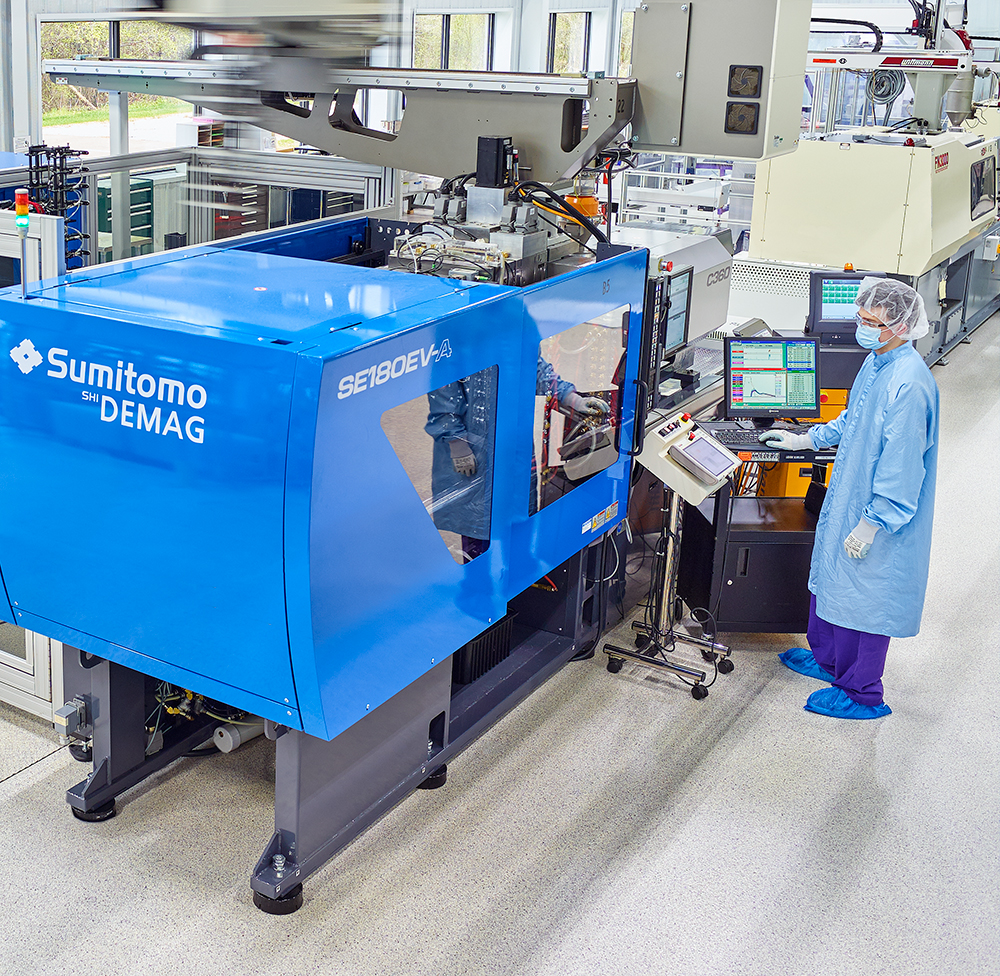"Our goal was to adopt a new method of producing elastomeric covers, one that eliminated resin scrap, improved throughput and provided greater performance and consistency."
Senior process engineer for the diagnostics company
Situation
Trust. That word is taken very seriously at a leading global clinical diagnostics company that manufacturers immunoassay reagent packs.
Their reagent packs contain the antibodies needed for the quantitative testing of medical samples. Lab technicians, preparing to run an analysis trust that the reagents are stable and have not been contaminated or altered in any way as the packs move through the supply chain. A flexible elastomeric cover on top of the pack seals the contents of the reagent wells until time of use.
For such a simple component, the reagent covers have been surprisingly challenging to cost-effectively manufacture. The prior process required that a sheet of thinly extruded elastomer be attached to a multilayer adhesive film. The desired elliptical shape was then punched out using a flatbed die-cutting machine, resulting in covers that could adhere to the packs.
According to a senior manufacturing process engineer at the diagnostics company, the existing manufacturing approach had problems that could not be overcome.
“All of the excess resin material — more than 50% of what was extruded — was peeled away and scrapped after die cutting,” he says. “Besides costly waste, this process led to quality issues, such as the extruded layer peeling off the adhesive film. Our goal was to adopt a new method of producing the elastomeric covers, one that eliminated resin scrap, improved throughput, and provided greater performance and consistency.”
As the incumbent manufacturer was not equipped to implement a new production process, the diagnostics company began searching for a new contract manufacturer better suited for the difficult task. They found a truly collaborative partner in Comar Medical, which had extensive expertise in plastic injection molding for the diagnostics and medical/surgical device markets.







